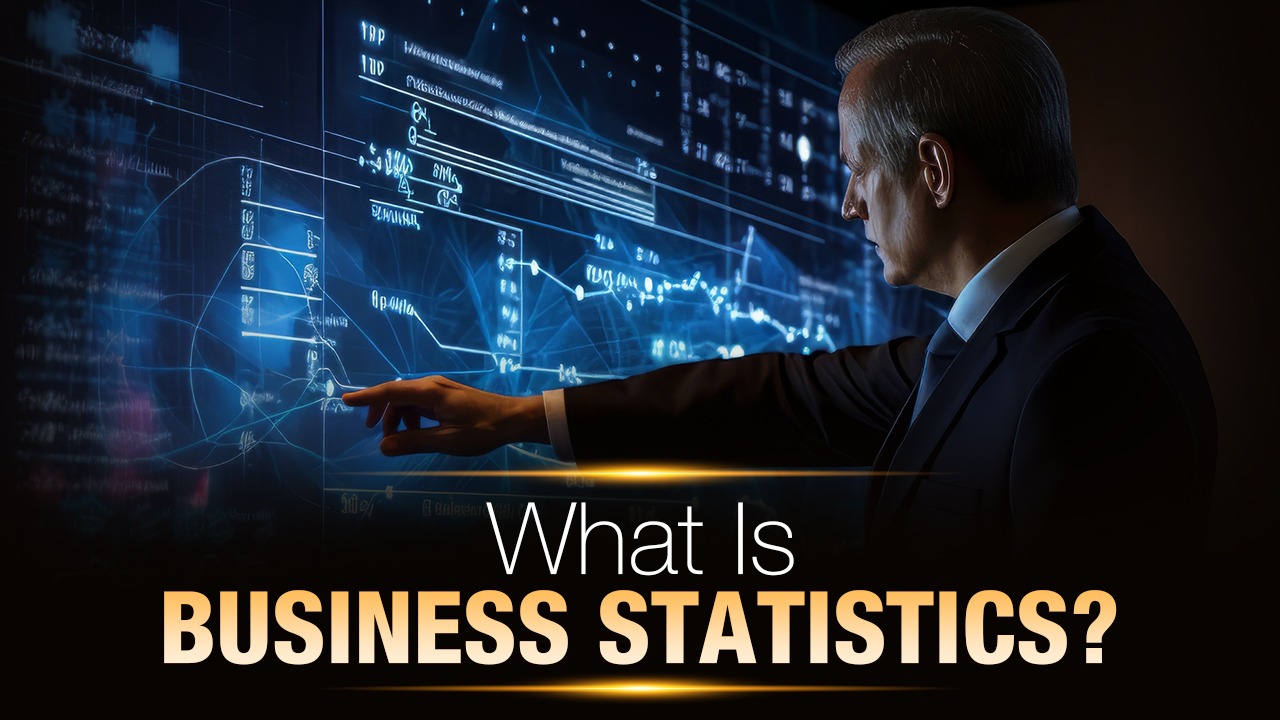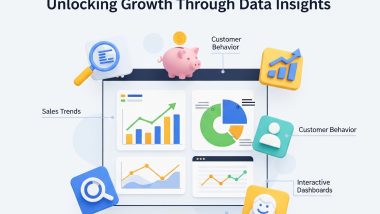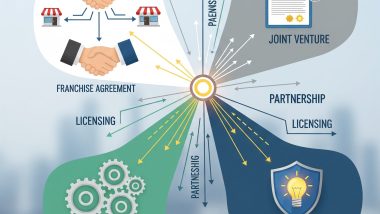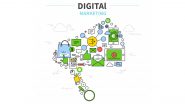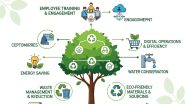Companies today no longer rely solely on intuition to make critical decisions. They also rely on data, especially business statistics, to make decisions with accuracy and foresight.
Business statistics helps entrepreneurs, managers, analysts, and decision-makers use data effectively to gain insights, mitigate risks, and exploit growth opportunities.
What is Business Statistics?
Business Statistics refers to the use of statistical tools and techniques to analyse business data, enabling companies to make informed decisions.
Unlike general statistics, business statistics focuses on applications that are directly relevant to business environments, from finance and marketing to operations and human resources. Broadly, business statistics can be divided into descriptive statistics, which summarise data, and inferential statistics, which make predictions based on data samples.
Business Statistics Meaning
Business statistics is not just about numbers. It involves data collection, data analysis, and the interpretation of results. While general statistics provides a foundation, business statistics tailors it specifically to improve business decisions. It involves understanding variables such as market demand, consumer behavior, and product quality, which are essential for business growth and sustainability.
Read Also: What is Kirkpatrick Model
History and Origin of Business Statistics
The history and origin of business statistics are intertwined with the broader development of statistics, which dates back centuries. Here’s a look at the major milestones and evolution of business statistics as a specialised field:
- Ancient Roots of Statistics (Early Uses):
- The origins of statistics can be traced to ancient civilisations, where governments and rulers collected data on populations, taxation, and agricultural production to manage resources and make governance decisions. For instance, ancient Egypt, China, and Rome gathered census data to plan military, economic, and social programs.
- The term "statistics" itself comes from the Latin word "status" or Italian "statista", which refers to statecraft or data relevant to state administration.
- Development of Probability Theory (17th Century):
- Modern statistics began to take shape in the 17th century with the advent of probability theory, largely motivated by questions about gambling and chance. Mathematicians like Blaise Pascal and Pierre de Fermat laid the groundwork for statistical and probabilistic calculations.
- This period saw the rise of methods that could analyse uncertainty—an essential aspect of business statistics today, especially for risk assessment and decision-making.
- Early Statistical Methods and Population Studies (18th Century):
- In the 18th century, statisticians like John Graunt and William Petty started applying statistics to study population health, mortality rates, and demographic changes, leading to the birth of "political arithmetic."
- These early applications focused on state policy and economic issues, including taxation, resource allocation, and social welfare, which are related to the business use of statistics today.
- Formalisation of Statistical Science (19th Century):
- The 19th century saw significant advancements in statistical methods and their applications, with figures like Carl Friedrich Gauss introducing the "normal distribution" and Sir Francis Galton developing correlation concepts.
- This era marked the beginning of organised data analysis, with statisticians developing tools that are widely used in business today, such as regression analysis and the correlation coefficient.
- Emergence of Business Statistics as a Field (Early 20th Century):
- The early 20th century saw the rise of business statistics as a distinct field, focusing on applying statistical methods specifically to business and economics.
- Key contributors like Ronald A. Fisher and Karl Pearson advanced statistical methods, such as analysis of variance (ANOVA) and chi-square tests, which became foundational for business applications like quality control, market analysis, and financial forecasting.
- By this time, statistics had become integral in manufacturing, largely due to Frederick Winslow Taylor's work on scientific management, which emphasised efficiency and data-driven operations.
- World War II and Industrial Quality Control (Mid-20th Century):
- During World War II, statistical methods became crucial for military logistics, quality control, and supply chain management. Notable work by W. Edwards Deming and Joseph M. Juran on quality control and process improvement influenced post-war industrial practices, especially in Japan.
- Deming's focus on statistical quality control revolutionised manufacturing and laid the groundwork for Total Quality Management (TQM) and Six Sigma, which are essential in business today.
- Data-Driven Business Decision-Making (Late 20th Century):
- As computing power increased in the late 20th century, the ability to collect, analyse, and apply statistical data grew exponentially. This led to the integration of statistics into various business functions like marketing, finance, human resources, and operations.
- The development of statistical software such as SPSS, SAS, and Minitab made it easier for businesses to apply statistical analysis, fostering a data-driven culture within organisations.
- The Digital Revolution and Big Data (21st Century):
- The 21st century introduced a new era in business statistics, marked by the advent of big data, machine learning, and advanced analytics. With vast amounts of data generated by digital platforms, businesses now rely heavily on predictive analytics, data mining, and AI-driven insights to remain competitive.
- This era has also seen the emergence of business intelligence (BI) tools and data visualisation platforms (like Tableau and Power BI), which help businesses make data-driven decisions more efficiently.
Types of Business Statistics
Business statistics can be broadly categorised into two main types:
1. Descriptive Statistics:
- Definition: Descriptive statistics summarise and organise data to describe its main features without drawing any conclusions beyond the data itself.
- Purpose: Used to provide a simple overview of data, helping businesses understand what is happening at a particular moment.
- Examples:
- Measures of Central Tendency: Mean (average sales), median (middle income level in a customer group), and mode (most common product sold).
- Measures of Dispersion: Range (difference between highest and lowest sales figures), variance, and standard deviation (how spread out customer spending is).
- Visualisation Tools: Graphs, tables, and charts that showcase business data trends, such as monthly revenue charts or customer satisfaction score distributions.
2. Inferential Statistics:
- Definition: Inferential statistics make predictions or inferences about a larger population based on a sample of data.
- Purpose: Allows businesses to make decisions about a larger population by analysing a smaller subset, saving time and resources.
- Examples:
- Hypothesis Testing: Testing assumptions, such as whether a new marketing strategy increases sales or if a customer segment prefers a certain product.
- Regression Analysis: Predicting outcomes based on relationships between variables, such as how marketing spend might affect revenue.
- Confidence Intervals: Estimating the range in which a population parameter lies based on sample data (e.g., estimating the average amount customers are likely to spend within a range).
- ANOVA (Analysis of Variance): Comparing means across different groups (e.g., performance of different product categories) to identify significant differences.
Special Applications of Business Statistics:
Some business contexts use more specialised types of statistics, like predictive analytics for forecasting, quality control statistics for production standards, and time series analysis for studying data points over specific time intervals.
These types of business statistics together enable businesses to both understand their current data and make informed, data-driven decisions for the future.
Uses of Business Statistics
- Decision-Making: Statistics allows businesses to make decisions that are backed by data rather than guesswork, reducing errors and optimising results.
- Market Analysis: Through statistical analysis, businesses can understand customer preferences, trends, and competition, allowing for targeted strategies.
- Quality Control: Statistical Quality Control (SQC) is a technique used to ensure that products and services meet quality standards, minimising defects and improving customer satisfaction.
- Sales Forecasting: With statistical tools, businesses can forecast sales trends and plan inventory and resources accordingly, ensuring they meet demand without overproducing.
- Risk Analysis: Businesses face risks in every decision. Statistics help quantify and manage these risks, making risk assessment a valuable tool in business strategy.
- Performance Measurement: By using statistical performance indicators, companies can gauge employee productivity, operational efficiency, and overall effectiveness, making it easier to reward performance or make adjustments.
Importance of Business Statistics
- Supports Data-Driven Culture: A data-driven culture relies on evidence and metrics, leading to more consistent and objective organisational decisions.
- Increases Operational Efficiency: By identifying areas of inefficiency, statistics help streamline processes, saving time and resources.
- Reduces Risks and Uncertainties: With accurate forecasting and risk assessment, businesses can make safer bets and prepare for potential challenges.
- Enhances Customer Satisfaction: Analysing customer feedback and purchase patterns gives businesses a direct line to what customers want, allowing for improved service and product offerings.
- Boosts Profitability: Business statistics aid in cutting costs, increasing sales, and making other decisions that directly contribute to the company’s bottom line.
Real-Life Examples of Business Statistics
A prime example is Amazon, which uses business statistics extensively to manage its supply chain, forecast demand, and maintain customer satisfaction. By analysing buying patterns and seasonal trends, Amazon can predict demand spikes, ensuring timely deliveries and optimised inventory levels. Startups also rely on business statistics to measure growth metrics, optimise spending, and refine customer acquisition strategies.
Challenges in Business Statistics
Using business statistics is not without its challenges. For instance:
- Data Privacy Concerns: With increasing emphasis on data privacy, businesses must be cautious about how they collect and use data.
- Data Volume: Managing large datasets can be overwhelming and requires sophisticated tools and skilled analysts.
- Skilled Workforce: Skilled statisticians and analysts are essential, as poor interpretation can lead to misguided decisions.
Conclusion:
Business statistics is a powerful tool that has become indispensable in modern business. By embracing statistical analysis, companies can make smarter, more informed decisions, reduce risks, and enhance profitability. As businesses continue to grow in complexity, the use of statistics will only become more critical, making it essential for organisations to integrate statistical thinking into their operations for sustainable success.
